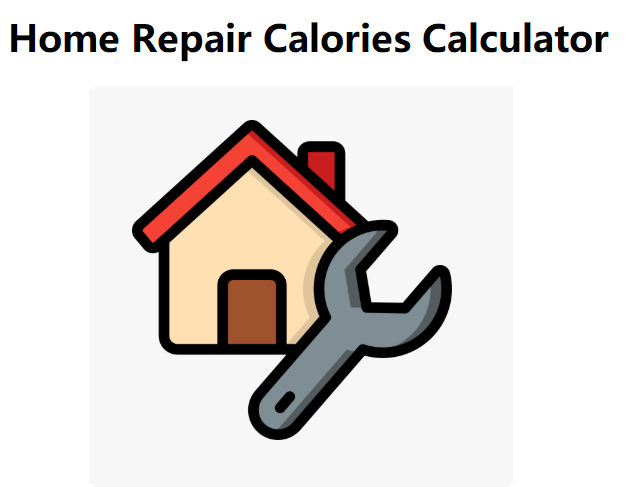 Home
Home
 Back
Back

Definition: This calculator estimates the calories burned during various home repair tasks, such as carpentry, painting, roofing, and automobile repair, based on your weight, activity type, and duration.
Purpose: It helps DIY enthusiasts and homeowners track energy expenditure from repair and maintenance activities, optimize their efforts for physical activity, and manage weight through task-specific calorie calculations.
The calculator uses the formula:
Where:
Additional Calculations:
Details: Home repair tasks range from light efforts like sharpening tools to vigorous ones like roofing, contributing to physical fitness. Tracking calorie burn highlights the exercise benefits of these activities and supports weight management.
Tips: Input your weight (kg or lb), select an activity (e.g., painting, carpentry, plumbing), and enter the duration (hours and minutes). Results show total calories, hourly rate, weight loss, and a breakdown of calories burned every 5 minutes.
The calculator uses MET values from scientific studies, providing a reliable estimate. However, individual effort, tools used, and task complexity may slightly affect actual calorie burn.
Yes, vigorous tasks like roofing (6.0 METs) or sawing hardwood (6.0 METs) burn more calories than light tasks like sharpening tools (2.0 METs) due to higher physical demand.
Yes, it includes options like "Automobile body work" (4.0 METs) and "Airplane repair" (3.0 METs), tailored to vehicle-related repair efforts.
Tasks requiring lifting or heavy labor, like spreading dirt with a shovel (5.0 METs), increase MET values compared to stationary tasks like wiring (3.3 METs).
Light efforts like washing and waxing a car (2.0 METs) or sharpening tools (2.0 METs) involve minimal exertion, resulting in lower calorie burn compared to more demanding repairs.